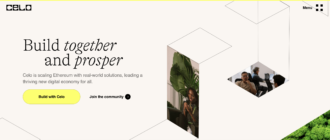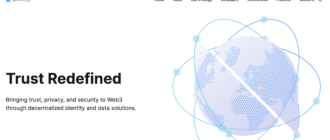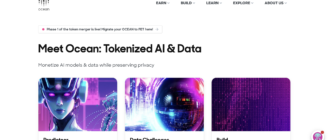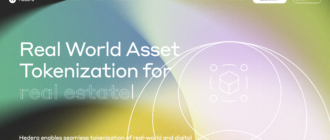Decentraland represents a pioneering project in the cryptocurrency space, focusing on creating a decentralized virtual reality platform. Powered by the Ethereum blockchain, it enables users to create, experience, and monetize content and applications within a virtual world, fundamentally altering how people interact with virtual reality through blockchain technology.
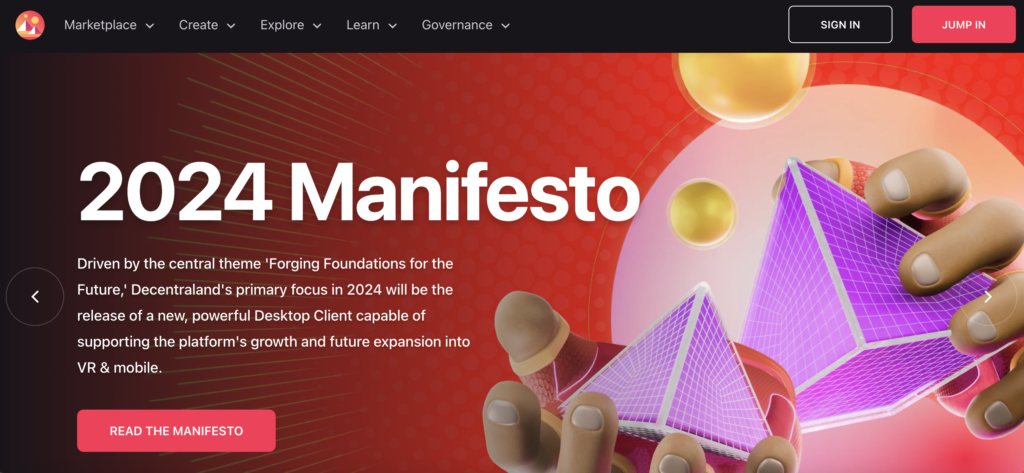
History of the Project
Decentraland was officially launched in 2017 after a successful initial coin offering (ICO) that raised approximately $24 million. It was founded by Ariel Meilich and Esteban Ordano, who both aimed to decentralize virtual reality, giving power back to the users. The project has seen significant developments over the years, including partnerships, platform upgrades, and increasing community engagement. The team behind Decentraland is supported by the Decentraland Foundation, which ensures the project remains true to its decentralized ethos.
What is Decentraland?
Decentraland is a decentralized virtual platform where users can buy, build upon, and monetize plots of virtual land. At its core, it seeks to address issues related to centralization in the digital and virtual content creation sectors. By leveraging blockchain technology, Decentraland allows users to maintain ownership and control over the content they create and the interactions within the platform, facilitated by its native cryptocurrency, MANA.
How Decentraland Works
Decentraland is a sophisticated blend of blockchain technology, smart contracts, and decentralized storage, forming the backbone of its virtual reality platform. Here’s a detailed look at the technologies involved and their specific roles:
Blockchain and Smart Contracts
Ethereum Blockchain: Decentraland utilizes the Ethereum blockchain to harness its robust smart contract capabilities. This blockchain serves as the ledger for the Decentraland ecosystem, recording the ownership and transactions of the virtual land parcels known as LAND, as well as the platform’s native token, MANA.
Smart Contracts: Smart contracts on Decentraland are primarily responsible for managing the land ownership registry, the creation and transfer of MANA tokens, and the interactions within the marketplace. These contracts are written in Solidity, Ethereum’s native programming language, ensuring high security and interoperability with other Ethereum-based applications.
Consensus Mechanism
Proof of Stake (PoS): Following Ethereum’s shift from Proof of Work (PoW) to Proof of Stake, Decentraland also adopted this consensus mechanism. PoS offers a more energy-efficient method of processing transactions and securing the network. Validators are chosen to create new blocks based on the amount of MANA they hold and are willing to ‘stake’ as collateral, which significantly reduces the likelihood of fraudulent transactions.
Distinctive Technological Aspects
Decentralized Storage: Unlike traditional online platforms, where content is stored on centralized servers, Decentraland uses a decentralized storage system known as the InterPlanetary File System (IPFS). This system allows user-generated content, such as textures and 3D models needed for their virtual properties, to be stored on multiple nodes across the network, enhancing data permanence and reducing reliance on any single hosting provider.
VR Integration: The seamless integration of VR technology with blockchain is a distinctive feature of Decentraland. Users can create, experience, and monetize their VR content using VR headsets, making the platform a truly immersive experience. This integration is achieved through the use of A-Frame, a web framework for building virtual reality experiences, which allows content to be viewed as 3D spaces in web browsers or through VR headsets.
How Decentraland Stands Out
Compared to other virtual world platforms, Decentraland offers a higher degree of decentralization. Most other platforms control content and user interaction through centralized governance. In contrast, Decentraland places control and ownership in the hands of its users, facilitated by blockchain technology. This not only ensures transparency and security but also allows users to have a tangible stake in the platform’s governance through DAO (Decentralized Autonomous Organization) structures.
Tokenomics of Decentraland
MANA is a utility token within the Decentraland ecosystem, not a coin. As an ERC-20 token on the Ethereum blockchain, MANA serves several key purposes, from transactions to governance, within the Decentraland platform.
Nature and Utility of MANA
MANA is used for purchasing LAND—virtual real estate represented as ERC-721 non-fungible tokens (NFTs)—as well as for various goods and services within the Decentraland virtual world. This dual utility supports both the transactional economy and the participatory governance of the platform, allowing token holders to vote on policy updates, land auctions, and the types of content that are allowed within Decentraland.
Emission Model and Distribution
Initially, MANA was launched with a fixed supply of 2.8 billion tokens, following its initial coin offering (ICO) in 2017. A significant portion of these tokens was allocated to the community and early contributors, with the rest reserved for the Decentraland Foundation and continuous development efforts. This fixed supply model adds a deflationary aspect to the token, as tokens used to purchase LAND are burned, effectively removing them from circulation and potentially increasing MANA’s scarcity over time.
Price Dynamics and Economic Factors
The price of MANA is influenced by various factors, including the demand for land and services within Decentraland, speculative trading, and the broader dynamics of the cryptocurrency market. As virtual real estate and Decentraland’s platform have grown in popularity, there have been significant fluctuations in MANA’s price, reflecting the volatile nature of the crypto markets and the speculative interest in NFTs and virtual assets.
Governance and Staking
In addition to its transactional use, MANA can be staked in governance protocols. This staking mechanism not only secures the network but also empowers MANA holders to participate directly in the governance decisions through the Decentraland DAO. The DAO controls important factors such as subsidies for new developments, content curation rules, and LAND auctions, making MANA holders integral to the decentralized management structure of the platform.
Where to Buy MANA Token
MANA, the native token of Decentraland, is widely available across several major cryptocurrency exchanges, ensuring its accessibility to a broad user base. If you’re looking to purchase MANA, you can find it on the following platforms:
- Binance: As one of the largest and most popular cryptocurrency exchanges globally, Binance offers high liquidity, making it an excellent option for buying and selling MANA. It supports multiple trading pairs for MANA, including MANA/USD, MANA/BTC, and MANA/ETH.
- HTX (formerly Huobi): HTX is known for its robust security measures and a wide selection of cryptocurrencies. MANA is available for trading with several pair options, facilitating users in different regions.
- MEXC: This exchange is known for offering a wide variety of tokens and numerous MANA trading pairs. Its user-friendly interface makes it suitable for both beginners and experienced traders.
- Bybit: Bybit supports MANA trading and offers advanced trading features like futures and derivatives, appealing to traders looking for more sophisticated financial instruments.
- KuCoin: KuCoin is popular among cryptocurrency enthusiasts for its user-friendly interface and competitive trading fees. It supports multiple MANA pairs, providing flexibility in trading.
- Bitfinex: Known for its advanced trading features and deep liquidity, Bitfinex is another solid option for purchasing MANA. It offers several fiat and cryptocurrency pairs for MANA.
Where to Store MANA Token
Choosing the right wallet to store MANA is crucial for security and accessibility. Here are some options that provide robust security features along with ease of use:
- MetaMask: Perhaps the most popular Ethereum wallet, MetaMask can be used to store MANA. It’s a browser extension and mobile app that allows interaction with the Ethereum blockchain, making it not only a storage solution but also a gateway to Ethereum-based applications like Decentraland.
- Ledger Nano S/X: These hardware wallets offer top-notch security by storing your MANA offline, making them less susceptible to hacks. They support Ethereum and ERC-20 tokens like MANA, combining high security with ease of use.
- Trezor: Similar to Ledger, Trezor is a hardware wallet that provides offline storage for MANA. It’s known for its security and support for multiple cryptocurrencies.
- Trust Wallet: A mobile wallet owned by Binance, Trust Wallet supports a wide range of cryptocurrencies including MANA. It offers a user-friendly interface and the ability to interact with decentralized applications directly from the wallet.
- Coinbase Wallet: This wallet from Coinbase is separate from the Coinbase exchange and provides a secure way to store and manage your MANA. It supports a wide range of cryptocurrencies and allows users to interact with decentralized applications.
Each of these wallets offers different features and levels of security, from highly secure hardware wallets like Ledger and Trezor to versatile and user-friendly software wallets like MetaMask and Trust Wallet. When choosing a wallet, consider factors such as security, ease of use, and compatibility with other cryptocurrencies you might own.
Future Outlook and Development Projections
The growth potential of Decentraland is rooted in several key areas: expanding virtual reality technologies, increasing interest in digital real estate and NFTs, and strategic partnerships that broaden its ecosystem and user base.
Growth Drivers
Technological Advancements: As virtual reality (VR) technology becomes more accessible and advanced, platforms like Decentraland stand to gain significantly. The continuous improvements in VR headsets and user interfaces can enhance the user experience, attracting more users to the platform.
Digital Real Estate and NFT Boom: The increasing popularity of NFTs has spotlighted platforms like Decentraland, where users can buy, sell, and trade digital assets securely. The rising value of digital real estate, driven by scarcity and user demand, also contributes to its growth.
Strategic Partnerships: Decentraland has established partnerships with various companies and platforms that enhance its offerings and expand its reach. Notable partners include:
- Samsung: Integration with Samsung Blockchain enhances Decentraland’s accessibility on mobile devices.
- SuperRare and MakersPlace: Collaborations with these digital art platforms have brought rich, interactive art experiences into the virtual world, attracting artists and collectors.
- OpenSea: This partnership allows users to trade Decentraland assets on the largest NFT marketplace, increasing liquidity and visibility.
Development Projections
The future development of Decentraland is likely to focus on scaling the platform to support more users simultaneously, enhancing the fidelity of its virtual experiences, and integrating with other blockchains for increased interoperability. This could lead to broader applications of the platform, potentially moving beyond entertainment and social interaction into areas like virtual workspaces and education.
The Ecosystem of Decentraland
Decentraland’s ecosystem is comprehensive, supporting a wide range of activities and services:
- Marketplace: Users can trade land and other virtual goods, fostering a dynamic economy within the platform.
- Builder Tool: This tool allows users to create and deploy interactive scenes on their land without extensive coding knowledge.
- DAO: The Decentraland DAO is a fully functional decentralized autonomous organization where MANA token holders govern the rules of the virtual world, manage its software and assets, and vote on policy updates and land auctions.
- Events and Social Gatherings: The platform hosts a variety of virtual events, from art exhibitions to music concerts, driving user engagement and retention.
The Decentraland ecosystem is designed to be self-sustaining, encouraging user-generated content and interaction to drive continuous growth. This model not only retains users but also attracts a diverse group from developers and artists to investors and casual VR enthusiasts, all contributing to the vibrant community and economy of Decentraland.
Conclusion
Decentraland stands out as a unique blend of blockchain technology and virtual reality, presenting a significant case study in decentralized application development. Its innovative use of smart contracts, a robust tokenomics system, and a strong community engagement model position it as a formidable player in the virtual world space. As technology and market dynamics evolve, Decentraland may continue to play a pivotal role in shaping the future of decentralized virtual experiences.


